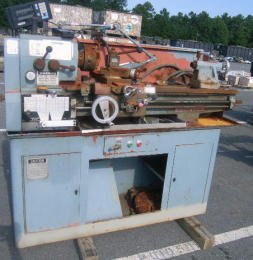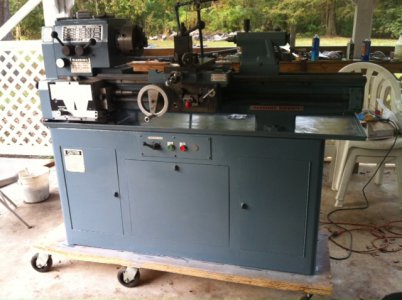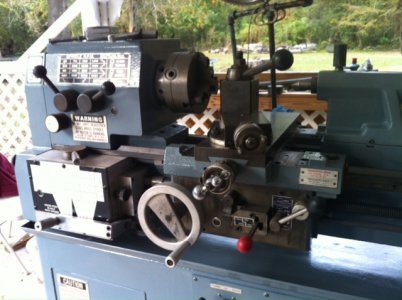I just acquired one of those rusty SM 1334 lathes from a government auction which has actually cleaned up really well. It looks to have been run very little and has no noticeable wear...it is very tight and the ways look almost perfect. After cleaning up the light rust, most surfaces were smooth. The exception being the taper attachment which has some light to medium pitting. I could go into more detail about the small things that I had to work on to get the lathe fully functional, but I don't want to stray too far off topic...I just wanted to give some background on the machine before I ask a question.
After "fixing" all the little problems, I hooked the machine up to the only 3 phase power supply that I have, a 25 year old Phase-A-Matic that is properly sized to the machine. I ran it through every speed and threading combination on the high speed pulley setup and it ran super smooth except when it is run in reverse at 50 and 100 rpm.
In reverse at the low spindle speeds there is a noticeable tapping or knocking that happens exactly once per revolution of the spindle. It is about the equivalent of tapping the tip of an ink pen lightly on a table. This noise cannot be heard at higher speeds but may just be overshadowed by the louder hum of the spindle spinning faster. I will add that the tapping also occurs when the screw cutting gearbox is placed in neutral. I can't tell where the noise is coming from but I am assuming it is from the headstock. With that in mind, I took the cover off the headstock and all the visible gears appear to be perfect with only minimal wear. Also, when turning the chuck by hand I cannot feel anything unusual.
Anyone have any ideas about what could be causing this tapping sound? Also, should I disregard the noise and just run the lathe (can't see using law speed reverse very often) or identify and fix the problem before I run it again?
Tony
After "fixing" all the little problems, I hooked the machine up to the only 3 phase power supply that I have, a 25 year old Phase-A-Matic that is properly sized to the machine. I ran it through every speed and threading combination on the high speed pulley setup and it ran super smooth except when it is run in reverse at 50 and 100 rpm.
In reverse at the low spindle speeds there is a noticeable tapping or knocking that happens exactly once per revolution of the spindle. It is about the equivalent of tapping the tip of an ink pen lightly on a table. This noise cannot be heard at higher speeds but may just be overshadowed by the louder hum of the spindle spinning faster. I will add that the tapping also occurs when the screw cutting gearbox is placed in neutral. I can't tell where the noise is coming from but I am assuming it is from the headstock. With that in mind, I took the cover off the headstock and all the visible gears appear to be perfect with only minimal wear. Also, when turning the chuck by hand I cannot feel anything unusual.
Anyone have any ideas about what could be causing this tapping sound? Also, should I disregard the noise and just run the lathe (can't see using law speed reverse very often) or identify and fix the problem before I run it again?
Tony




